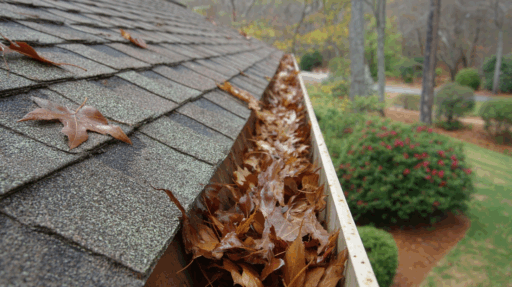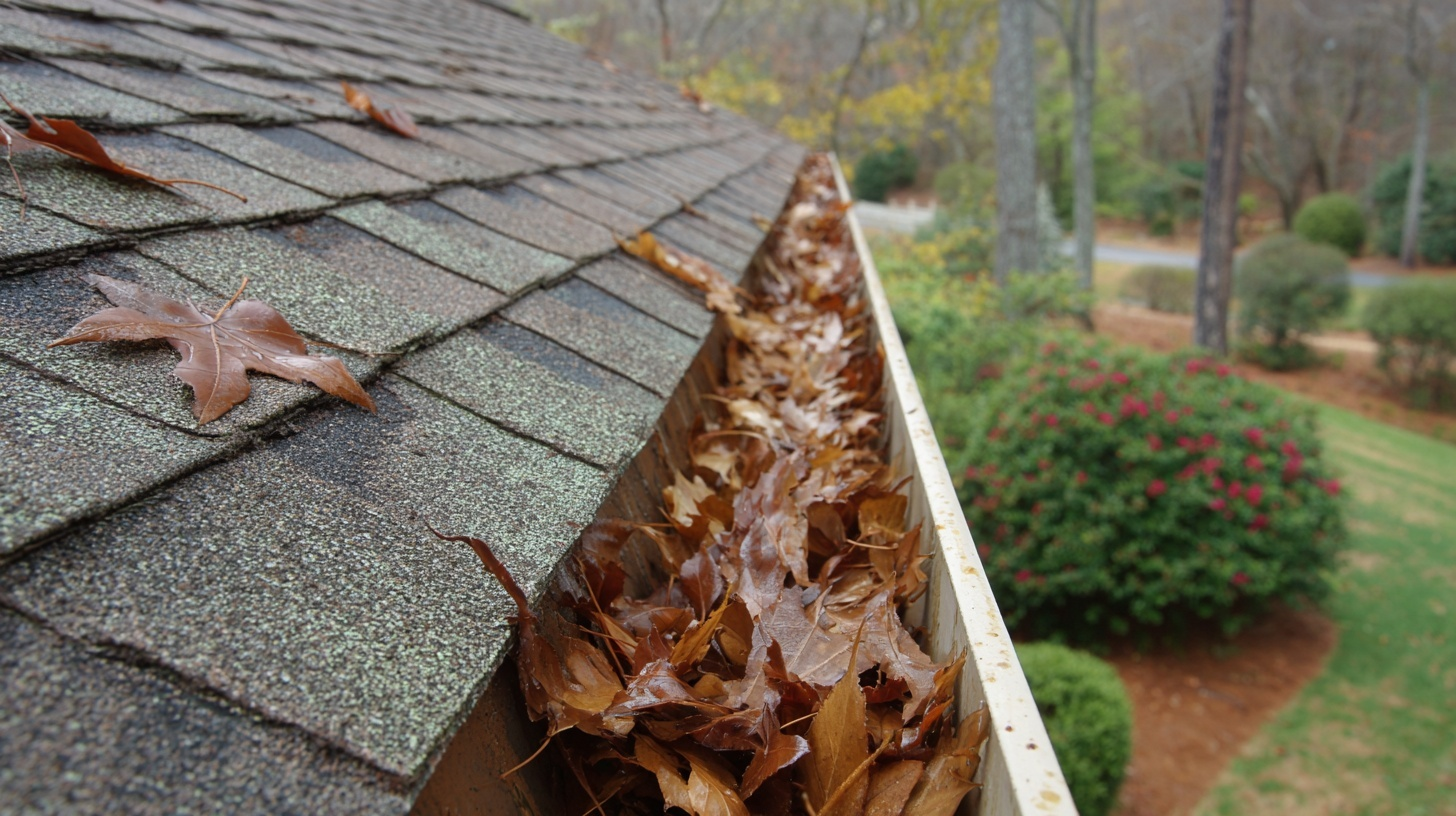There you are, up on a ladder, elbow-deep in soggy leaves and questionable gunk. Fun Saturday, right?
I’ve been there too. And honestly, cleaning gutters ranks somewhere between doing taxes and watching paint dry on my list of favorite activities. However, millions of homeowners swear by gutter guards as their lifesaver.
Do gutter guards work, though? Or are they just another expensive home improvement trend that promises the world but delivers disappointment?
Today, I’ll share what I’ve learned after testing different types and speaking with real homeowners. Spoiler alert: the answer to do gutter guards work might surprise you.
What are Gutter Guards and Why are they Beneficial?
Think of gutter guards as tiny bouncers for your roof’s drainage system. They sit there all day, deciding what gets in and what stays out. Pretty simple concept, but the execution varies wildly depending on which type you choose.
Gutter guards are protective covers that install over your existing gutters. How do gutter guards work? Their main job is keeping leaves, twigs, and other debris from clogging up your drainage system while still allowing water to flow through.
Are gutter guards worth it? Gutter guards promise to make your life easier, and in many cases, they deliver on this promise.
The main advantages that make homeowners consider switching from traditional gutter maintenance are given below.
- Gutter guards reduce the need for frequent gutter cleaning, often limiting it to once a year.
- They help prevent ice dams by maintaining proper water flow during winter.
- Guards add fire protection by blocking embers from landing in dry gutter debris.
- Clean gutters deter pests like mosquitoes and rodents from nesting.
- They improve rainwater quality by filtering out large debris before it is collected.
How Do Gutter Guards Work?
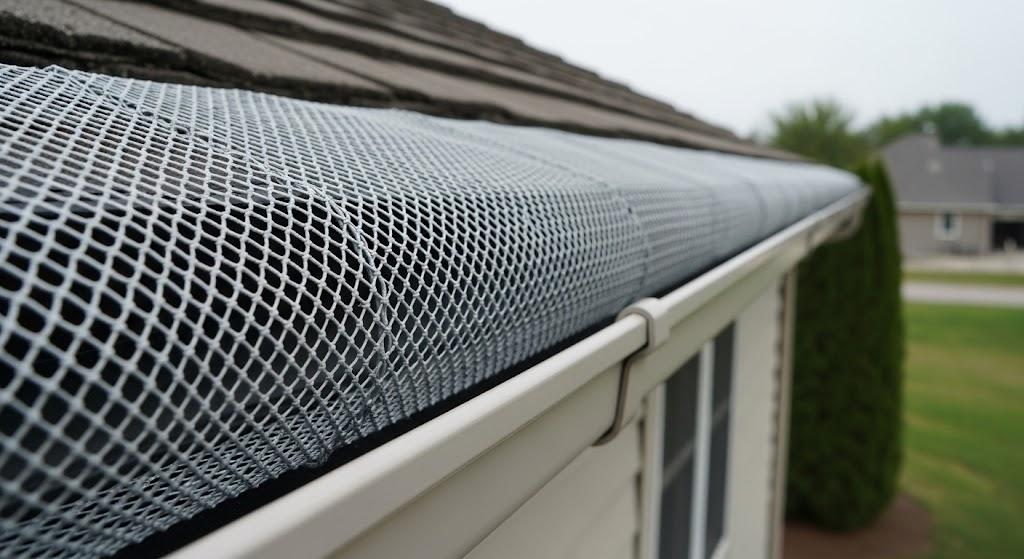
Most guards work on a basic principle: they create barriers with holes, slots, or mesh that are big enough for water but too small for most debris.
The physics behind them is straightforward. Water follows gravity and surface tension, so it can navigate around small openings and curves.
Leaves and larger debris, however, can’t make those tight turns. They either bounce off the surface or get caught on top, where wind can blow them away.
Different materials and designs impact the effectiveness of this process. Some guards use fine mesh that catches almost everything. Others rely on larger openings that only stop bigger items.
The key is finding the right balance between water flow and debris blocking for your specific situation.
Potential Downsides of Using Gutter Guards
Before jumping on the do gutter guards work bandwagon, consider these potential drawbacks that might affect your decision and budget.
Not Maintenance-Free
Despite what some salespeople claim, guards still need attention. Small debris can accumulate on top, and you’ll occasionally need to brush or rinse it off. They reduce maintenance but don’t eliminate it entirely.
Installation Challenges
Getting guards properly installed can be tricky, especially on complex rooflines. Poor installation can actually make water flow problems worse or damage your existing gutters. Many homeowners end up paying for professional installation even if they’re usually DIY types.
Ice Dam Issues
In colder climates, some guard designs can contribute to ice dam formation. When snow melts and refreezes at the gutter line, guards can sometimes trap ice, creating bigger problems than they solve.
Performance Varies
Not all guards work equally well in all situations. Heavy rain, specific types of trees, or unique roof designs can affect how well guards perform. What works great for your neighbor might not be ideal for your home.
Gutter Guard vs Traditional Cleaning
Let’s settle this debate once and for all. You’re probably wondering whether to stick with your trusty ladder routine or invest in guards.
| Aspect | Gutter Guards | Traditional Cleaning |
|---|---|---|
| Initial Cost | $500-2,500+ for average home | $0 (DIY) or $150-300 per cleaning |
| Annual Maintenance | $100-300 for inspection/cleaning | $300-600 for bi-annual cleaning |
| Time Investment | 2-4 hours annually | 6-8 hours annually |
| Safety Risk | Minimal after installation | High (ladder work multiple times yearly) |
| Effectiveness | 70-95% debris reduction | 100% clean (when done properly) |
| Lifespan | 10-20 years with proper care | Immediate results, ongoing need |
| Weather Impact | Works in most conditions | Limited by weather windows |
| Skill Required | Professional installation recommended | Basic DIY skills are sufficient |
Weigh in your options based on a breakdown of costs, time, and effort to help you determine which approach is most suitable for your home and budget.
Types of Gutter Guards
Different guard styles are more effective in various situations.
Here’s what you’ll find when shopping around, and what makes each type unique for various home setups.
1. Screen Guards
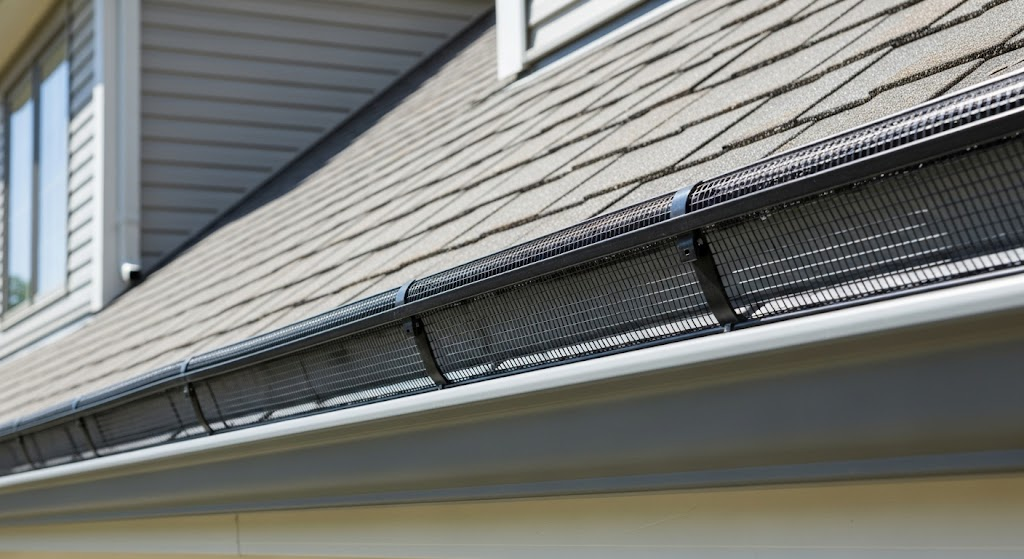
These basic metal or plastic screens stretch across gutter openings. They’re the most affordable option and easiest to install yourself.
Screen guards work well for larger debris but struggle with smaller items like pine needles. Expect to clean them more frequently than other types.
2. Mesh Guards
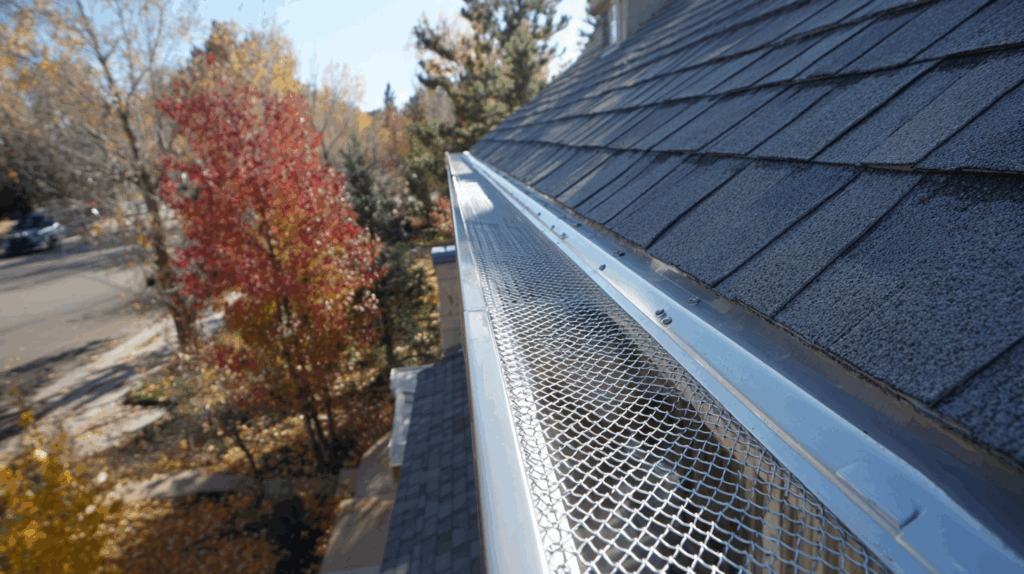
Think of these as screen guards with much smaller holes. The fine mesh catches more debris but also requires more maintenance since small particles can clog the tiny openings.
They work best in areas without many trees overhead.
3. Reverse Curve Guards
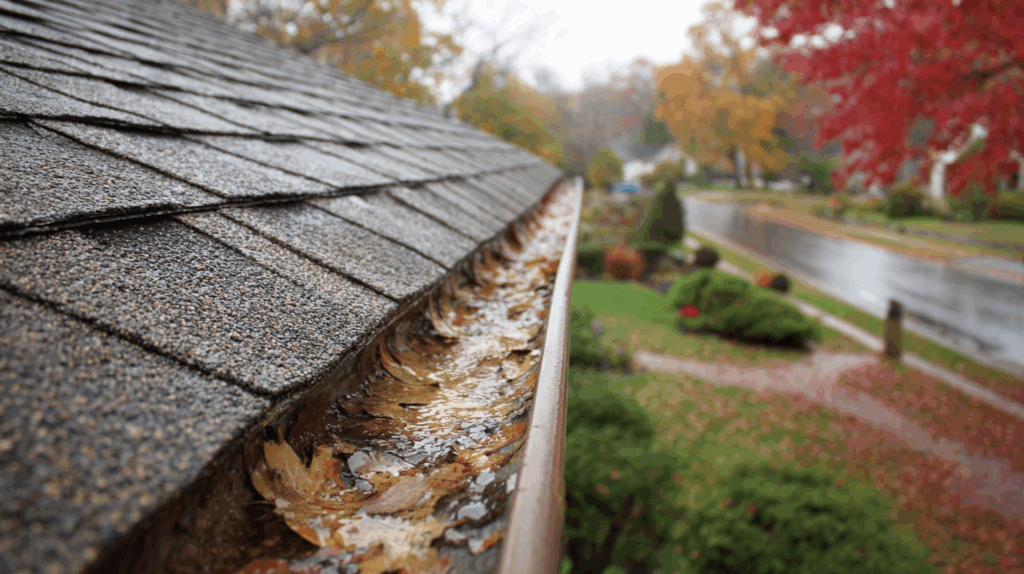
These curved designs use surface tension to guide water into gutters while debris falls to the ground.
They handle heavy rain well, but can be expensive and sometimes require professional installation. Wind can also blow debris back onto the curved surface.
4. Foam Inserts
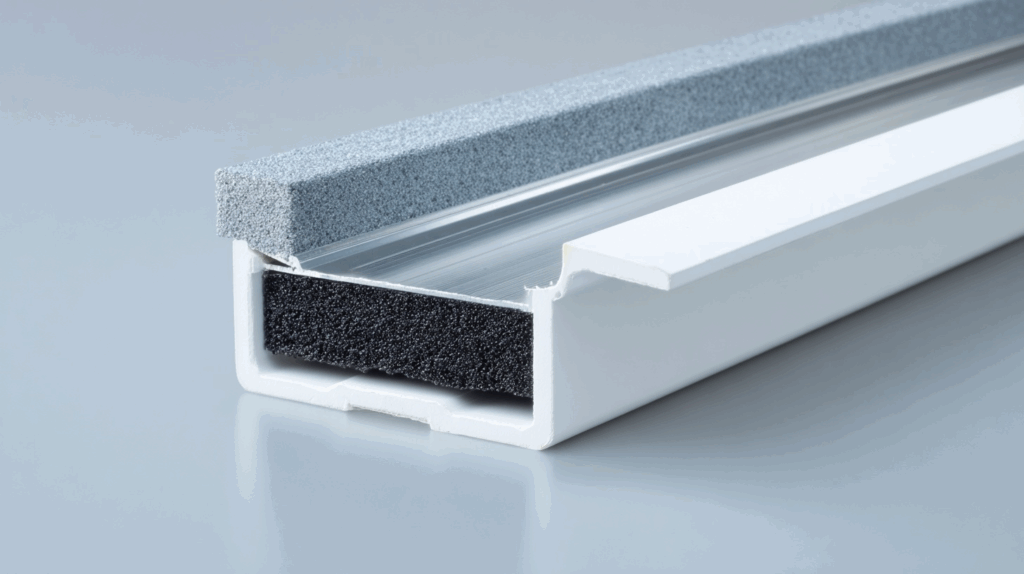
These foam blocks sit directly in your gutters, allowing water to soak through while blocking debris. They’re inexpensive and DIY-friendly but tend to break down faster than other materials and can get clogged with fine particles.
5. Brush Guards
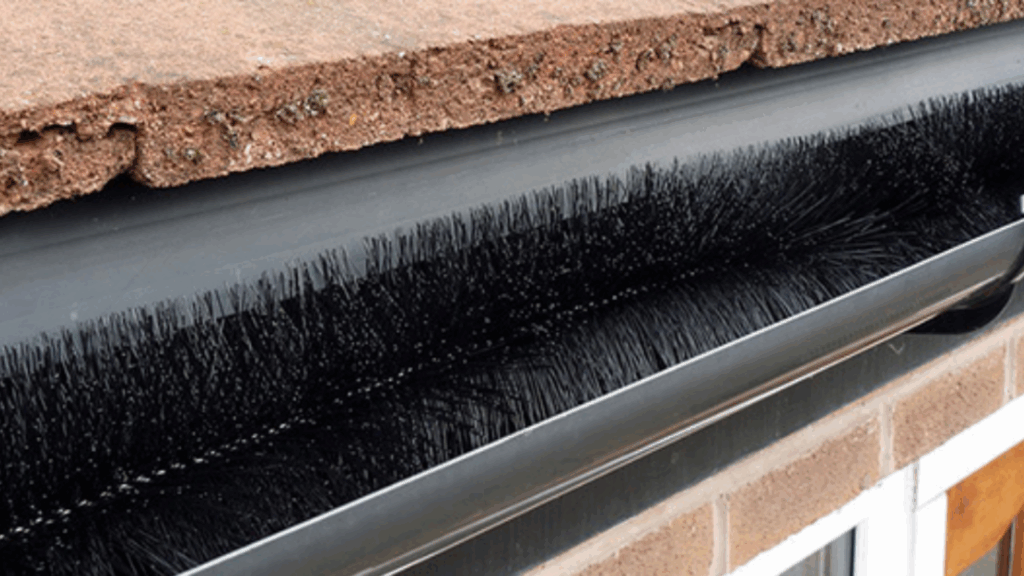
Picture bottle brushes sitting in your gutters – that’s essentially what these are. The bristles catch larger debris while water flows around them. They’re easy to install but require more frequent cleaning than other types.
6. Micro-Mesh Guards
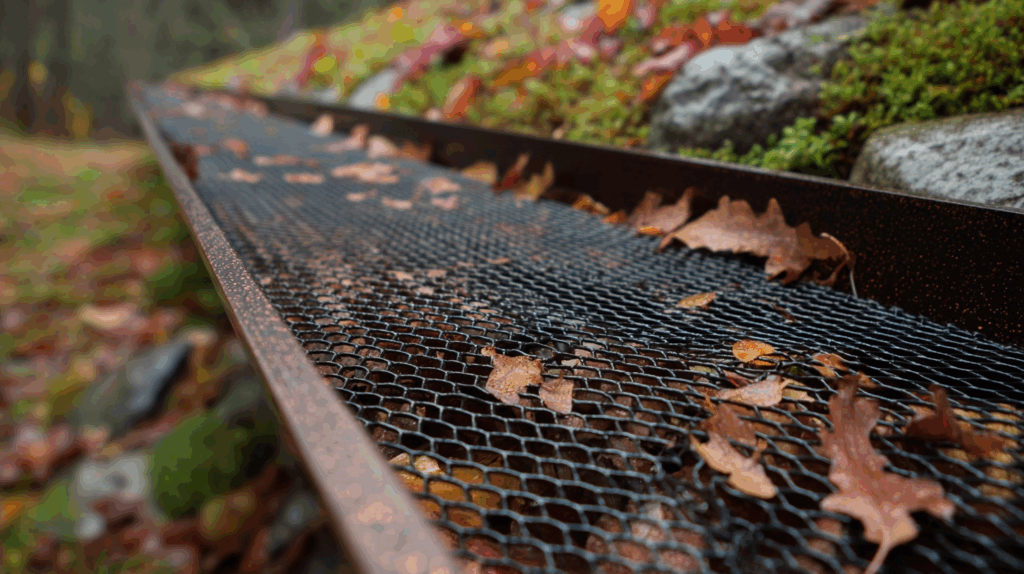
These are like mesh guards’ perfectionist cousin. They use surgical-grade steel mesh with holes so tiny you’d need a magnifying glass to see them clearly.
They block even the smallest debris like pine needles and maple keys, but all that fine screening can sometimes get clogged with pollen or dirt.
7. Solid Surface Guards
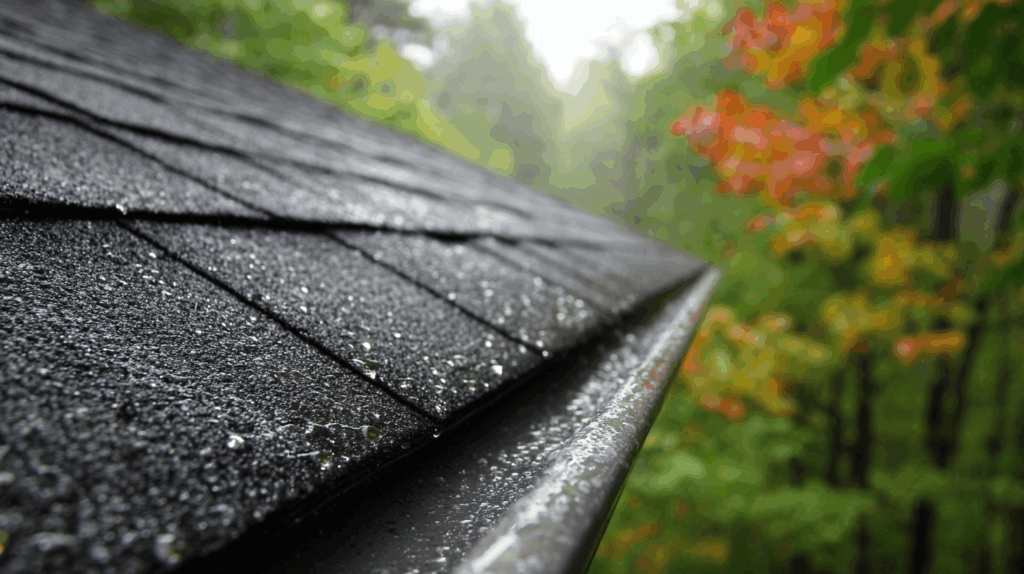
Think of these as tiny roofs over your gutters. They create a completely solid barrier with a curved nose that uses surface tension to guide water around the edge and into the gutter.
They’re great at shedding debris but can sometimes let water overflow during heavy rains.
8. Louver Guards
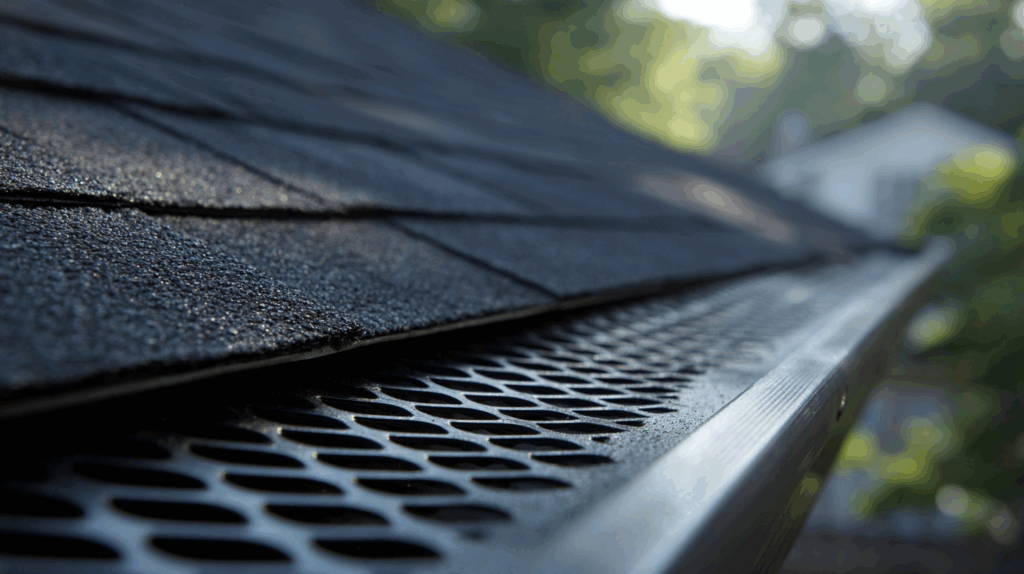
Picture mini window blinds lying flat over your gutters. These features have angled slats or fins that create channels for water to flow through while debris bounces off the angled surfaces.
They handle moderate debris well but can struggle with very small particles that slip between the slats.
9. Snap-In Plastic Guards
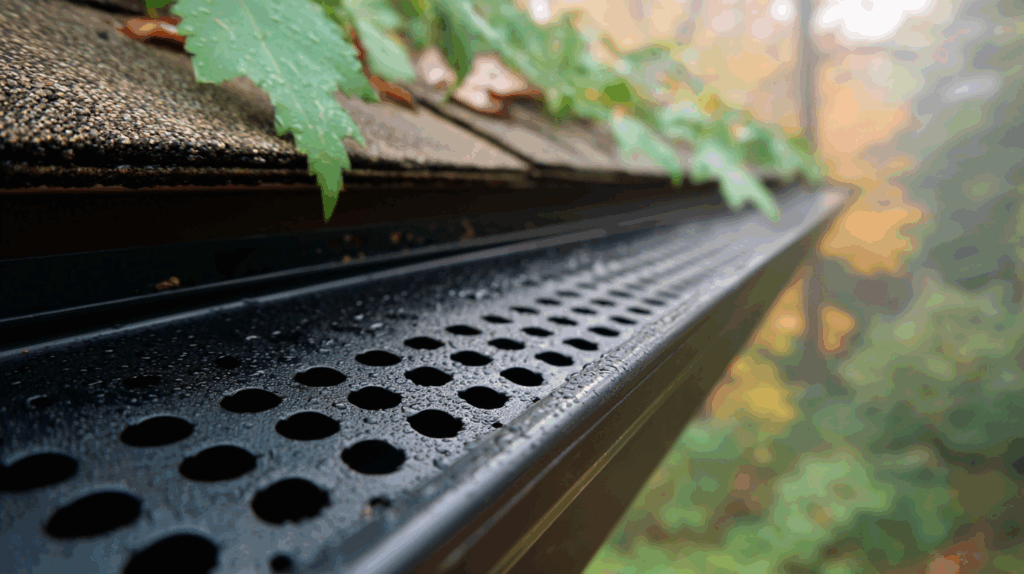
These budget-friendly options clip directly inside your existing gutters rather than sitting on top. They’re usually made from durable plastic with various hole patterns.
They’re super easy for DIY installation but may not handle heavy debris loads as well as surface-mounted options.
10. Raised Rib Guards
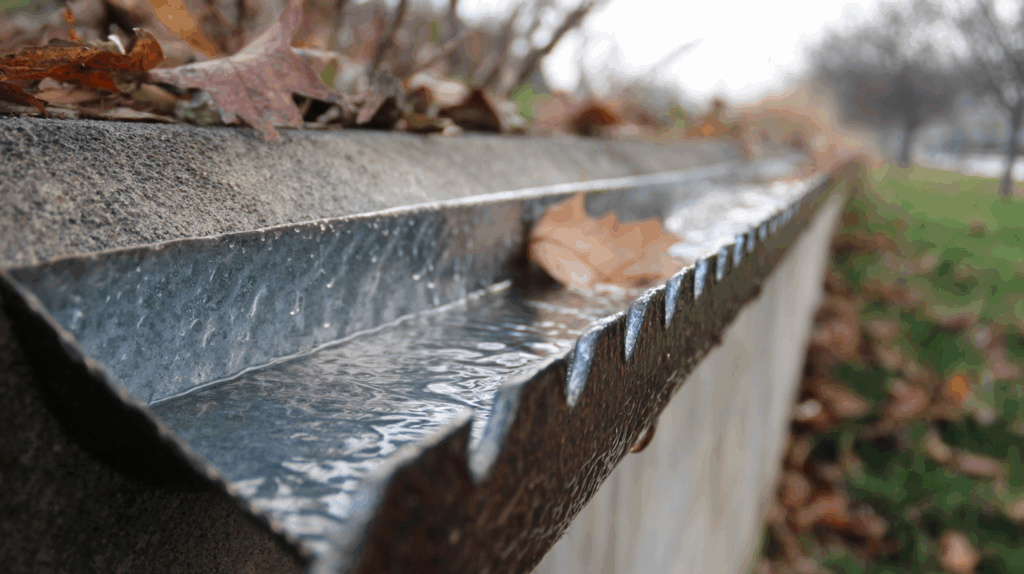
These solid guards feature raised channels or wave patterns that direct water flow while creating barriers for debris.
The raised sections help prevent small items from settling on the surface, encouraging them to blow away naturally. They work well in areas with a mix of debris types.
Maintenance Requirements to Consider
Even the best gutter guards require regular maintenance to function properly.
The good news is that maintenance becomes significantly simpler and less frequent compared to traditional gutter cleaning.
- Inspect twice yearly: Check for sagging, gaps, and surface debris buildup during spring and fall seasons.
- Clean based on guard type: Mesh guards require hosing, foam inserts require replacement checks, and reverse curve guards require surface clearing.
- Plan for winter challenges: Ice buildup can create dams, so some homeowners remove guards seasonally in snowy areas.
- Schedule professional inspections: Have a professional inspect your installation every few years to identify potential issues and wear patterns that may be missed.
- Catch problems early: Regular maintenance prevents minor issues from becoming expensive repairs later.
Final Verdict
So, do gutter guards work? The short answer is yes, but with some important caveats.
They’re not the magic solution that some marketing materials claim, but they can significantly reduce your workload in gutter maintenance.
Think of gutter guards as an investment in convenience rather than a permanent fix. They reduce the frequency and difficulty of gutter maintenance while providing additional benefits, such as fire protection and pest prevention.
The bottom line? If you’re tired of ladder duty and have the budget for quality guards, they’re worth considering. Just remember to research your options and perform regular basic maintenance.

